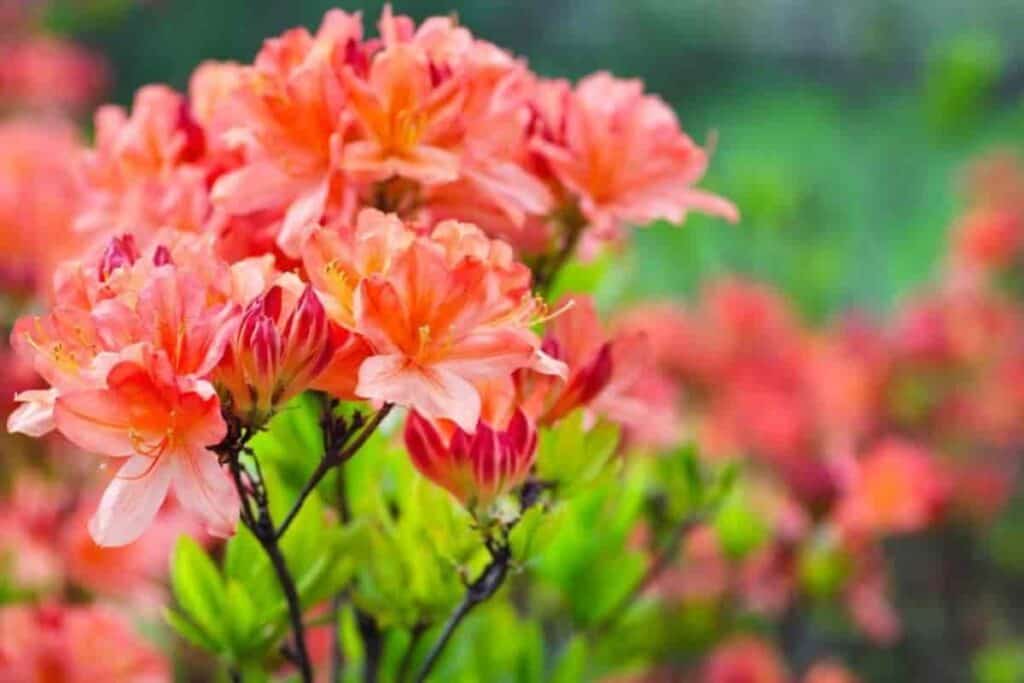When an authority tells you something can’t be done, doing it gives supreme satisfaction. Perhaps this is why the rhododendrons of Mrs. Bredelle Jesse of Columbia, Missouri, are her favorite shrubs.
When Mrs. Jesse first considered the problem of growing rhododendrons in 1938, the University of Missouri’s horticulture department told her it was impossible.

Rhododendrons must have acid soil, and Missouri’s soil was limestone. However, Mrs. Jesse, who had taught school in Pennsylvania where rhododendrons thrive, was determined to grow them in her garden, and after a few failures, she succeeded.
Mrs. Jesse ordered her first plants from a New Jersey nursery. One of her first plants, a Roseum Superbum, still thrives after 19 years, although two large sections had to be removed.
At its largest, it was about 5 ½’ feet high and 6’ feet in diameter.
“The requirements for growing rhododendrons successfully here in Missouri are few,” says Mrs. Jesse, “but they are absolute. The plants are not nearly as temperamental as roses.”
“Absolute Musts” in Growing Rhododendrons
Mrs. Jesse follows three “absolute musts” in growing rhododendrons.
First, the plants must be located so no alkaline soil is within the root area. In this connection, proper preparation of the planting hole or soil bed is necessary.
Mrs. Jesse digs down 1 ½’ to 2′ feet and fills the hole with equal parts of fine sand, peat moss, and oak leaf mold to ground level.
When placing the shrub in the mixture, she sets the root ball so that its top will be level with or just slightly higher than the surrounding ground.
Mrs. Jesse removes the burlap sack covering the roots but advises beginners to leave it on.
Sometimes she merely loosens the sack at the top and lays it back. Rhododendrons should be planted in the Midwest from November 15 to June 15.
Small plants, 12″ to 15″ inches high, establish themselves best in the Midwest, Mrs. Jesse has discovered.
A second must for rhododendrons is a year-round mulch of oak leaves 4″ to 8″ inches deep. While peat moss belongs in the planting mixture, Mrs. Jesse does not recommend it as a mulch because it packs and shuts out air to the roots.
The rhododendrons’ very fine root system, almost hair-like in texture, demands porous soil. Air and water must circulate freely through the soil for the plant to grow freely.
A third “must” Mrs. Jesse has found is that rhododendrons be only hand weeded. The roots usually spread 3′ or 4′ feet but seldom grow deeper than 10″ or 12″ inches. A hoe would be disastrous to the shallow roots.
Mrs. Jesse also believes azaleas and rhododendrons in the Midwest need partial shade. The evergreen leaves need some type of protection from the January sun and the hot summer sun.
Mrs. Jesse uses pines or hemlocks as natural windbreaks and backgrounds for her rhododendrons.
Where space does not permit evergreen windbreaks, some wind protection may be had from close cedar fencing or slated roofing.
Primary Rule in Rhododendron Culture
The primary rule in rhododendron culture is to keep the bed always moist, never very wet or dry, or have extreme injuries. Therefore, Mrs. Jesse does not water unless it is very dry; then, she soaks the soil about every ten days.
“It is not generally a good practice to sprinkle the flowers,” she said, “but the rhododendron foliage likes it, and I sprinkle it often during hot, dry spells.”
A few others have pioneered in raising rhododendrons in the Midwest. In 1936, Harry Seevers of Ottawa, Kansas, successfully raised both rhododendrons and azaleas in his garden.
He, too, was told they would not grow in eastern Kansas, but after one unsuccessful start, he purchased several 12 to 15-inch Catawba hybrids which thrived.
The most reliable of Mrs. Jesse’s several rhododendrons are pink Roseum Superbum and Roseum Elegans, a light pink. In addition, a rosy lilac rhododendron, Everestianum, does well here, as does Purpureum Elegans.
Forever pioneering, Mrs. Jesse is experimenting and succeeding with Chinese tree peonies—one nursery told her they could not be grown in the Midwest.
44659 by Ronald Dean Smith